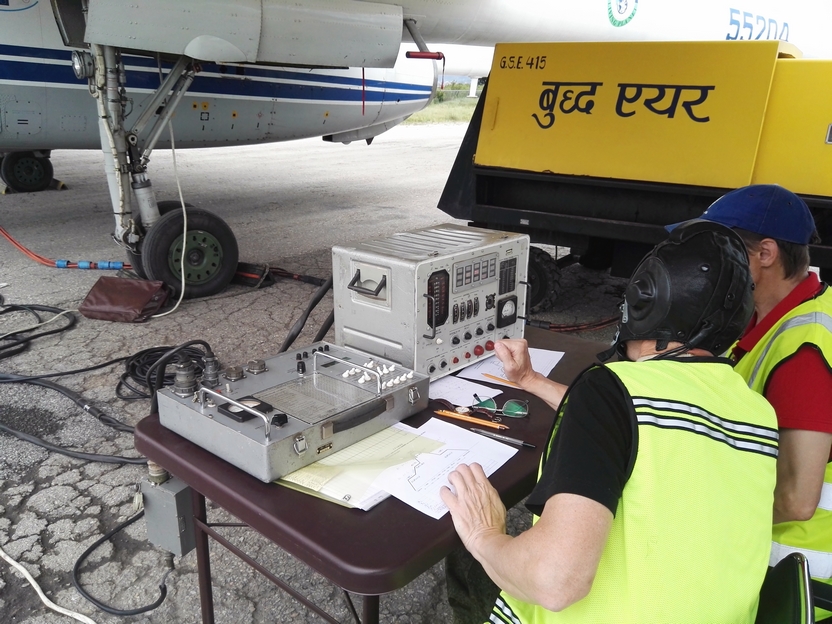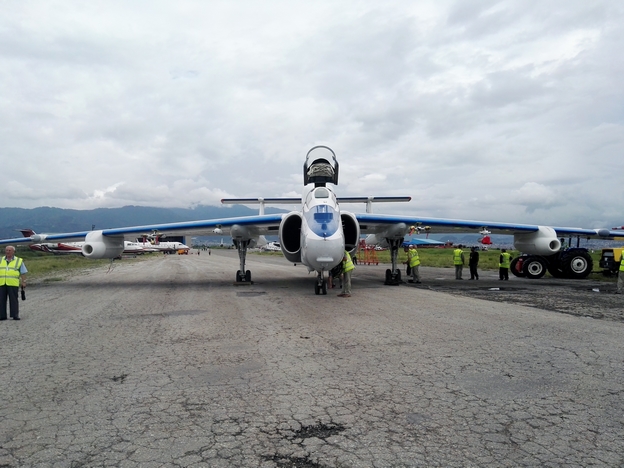
StratoClim is a multi-year research project supported by the European Union, the acronym "StratoClim" stands for "Stratospheric and upper tropospheric processes for better climate predictions".
The main objective of the project is to obtain more reliable predictions of climate change and stratospheric ozone by better understanding of key transport processes in the atmosphere and resolving them in models. Today, the complex interactions and feedbacks that occur in the boundary layer between tropos and stratosphere are not adequately represented in global prediction models. Particularly with regard to the dynamics of natural and anthropogenic emissions of aerosol starting materials, greenhouse gases and other important trace gases. The hypothesis is that these tiny (aerosol) particles play a major role in global weather.
StratoClim will investigate this hypothesis through a multi-level approach. For this, ground, balloon and aircraft measurement campaigns will be carried out and the result of these will be incorporated into chemical coupled process models (CCMs) and earth system models (ESMs).
The Russian research aircraft M-55 Geophysica has a unique combination of service height (21.5 km), relative slow cruising speed (700 km / h), and possible scientific equipment (1.5 t) and it is therefore ideally suited for the objectives of StratoClim. With the help of a highly specialized assembly of measuring instruments, the airplane will be able to carry out unique measurements over the Indian subcontinent during the Asian monsoon. As Campaign base the STratoClim has chosed Kathmandu, as ideal starting point for measurements. It will be possible to determine the distribution of trace gases as well as the chemical composition, number and size distribution of aerosol particles in the upper troposphere and lower sub-tropospheric sub-tropics determine.
The atmospheric researchers from Mainz, Germany, are represented with the aerosol measuring devices COPAS, UHSAS and ERICA, as well as with the cloud particle measuring devices CCP, CIP, PIP and HALOHOLO, thereby covering a range of particle sizes from 6 Nanometer to 6 Millimeter.
The campaign takes place in July and August 2017.
More information can be found here:
https://en.wikipedia.org/wiki/Myasishchev_M-55
The latest blog entry is on top!
Tuesday 25th July 2017
We have to repeat the EMC test today and we are waiting for clearances from the tower and less rain would be favourable.

Last night the ERICA team has successfully repaired a defect on the intake system and is ready for a second EMC test procedure.
Monday 24.07.2017
Today the electromagnetic compatibility test - EMC test - of all built-in instruments is available. It checks whether the instruments disturb the aircraft electronics or vice versa. This test is carried out once with the Ground-Power-Unit GPU connected and once with the engine generators running. on the power supply of the aircraft. The Geophysica has to be rolled onto the movement area, which is a challenge because it is quite narrow.
Yesterday we were again mentioned in a print article of another newspaper, the Himalayan Times:
https://thehimalayantimes.com/kathmandu/german-team-nepal-conduct-study-aerosol-monsoon-trends/

Saturday July 22nd 2017
After installing the brackets for the instruments under the wings yesterday the installation of the wing probes CIP, PIP, CCP is now in process. Team ERICA had time to replace a defective hardware component.
Today, the instruments are installed in the Geophysica and we hope to carry out some tests with the onboard power supply of the aircraft. Our first flight will probably take place next Thursday as the other teams still have to wait for freight containers traveling from Kolkata over land to Kathmandu.
Here are some impressions of the last two days:

Picture by Christoph Mahnke


Also worth mentioning is the commitment of the Buddha Air kitchen team, which is cooking every day fresh for us. We can use the staff canteen and there is delicious Nepalese food for lunch, at very fair prices.

Picture by Thomas Böttger
Update 5pm:
Our goal today: Integration and test of cloud particle measuring devices accomplished, all devices work perfectly. Yesterday, a reporter from the Nepali Times came by and wrote about us:
http://www.nepalitimes.com/blogs/thebrief/2017/07/21/how-pollution-affects-the-monsoon/
Thursday, July 20th 2017
The Mainz team started on Tuesday evening from Frankfurt via Abu Dhabi to Kathmandu and arrived well last night. In the rather turbulent approach to Katmandu, we were already able to convince ourselves that we are exactly right here for investigating convective systems.

Picture by Christoph Mahnke
Today, after breakfast, we took a bus shuttle to Buddha Air Hangar, which is located in the eastern part of the Tribhuvan International Airport (KTM) and was made available to us by the airline. Most of the international research teams are already on the ground installing their equipment. The Mainz team is setting up their equipment on the left.

Picture by Max Port

Picture by Max Port
Geophysica landed this morning after some delays during the transfer flight and is in waiting position. As soon as the machine can be pulled into the hangar, which is still sheduled for today, we can start with the integration of our instruments.

Picture by Christoph Mahnke
Update 7pm: The Geophysica is in the hangar! Our day's goal was reached after all. The instrument integration will take place tomorrow.

Picture by Max Port
Text and pictures by Max Port, Christoph Mahnke and Ralf Weigel.

